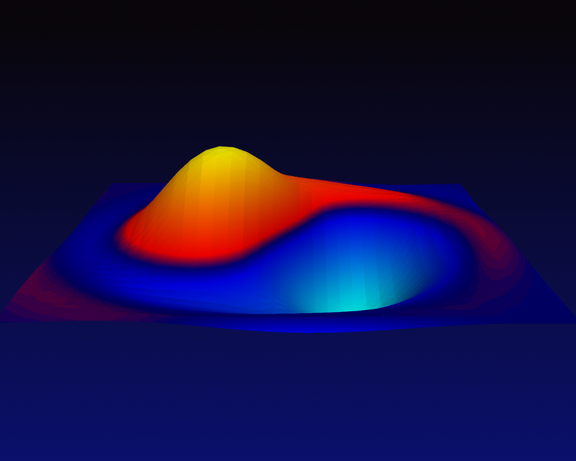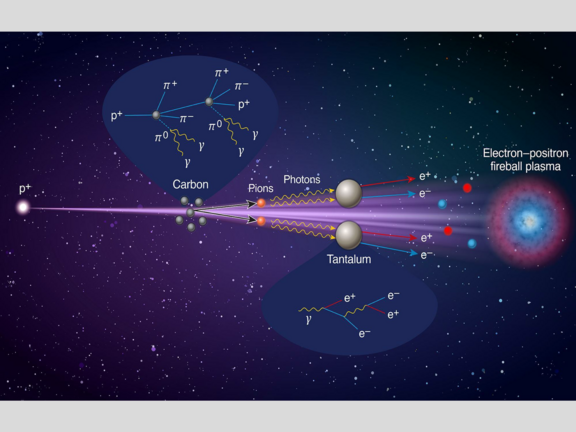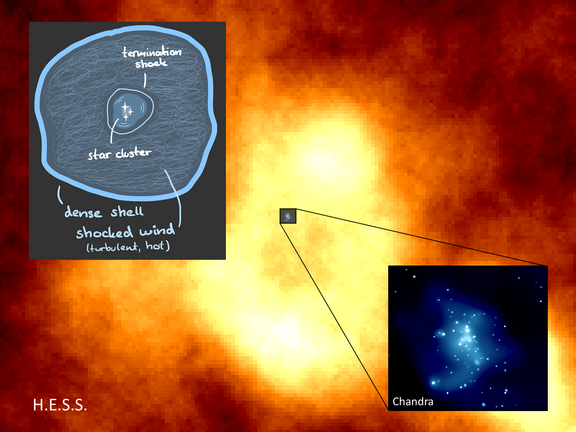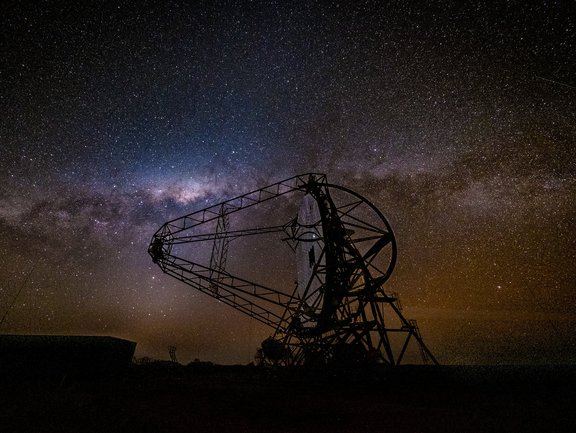Astrophysical Plasma Theory

The group focuses on developing reliable models of complex astrophysical systems to understand the origins of energetic particles, such as cosmic rays, their radiative signatures and their role in our Galaxy and beyond
We explore the physical processes that govern particle acceleration and dynamics, plasma physics, and radiative signatures in different scenarios, guided by theory, simulations, laboratory experiments, and observations. Our work includes studying supernova remnants, massive stellar clusters, extra-galactic jets, and gamma-ray bursts to address the multi-scale challenge of understanding how particles are energized to extreme values in the Universe. We also develop and utilize advanced plasma simulation techniques to capture the relevant energy and length scales of astrophysical systems. We do this in close collaboration with our colleagues in the Non-thermal Astrophysics Division
Group Members
| Name | Room | Tel. +49 6221 516- |
| Brian Reville | GE305 | -589 |
| Cormac Larkin | GE311 | -585 |
| Florian Schulze | GE319 | -591 |
| John Kirk (personal webpage) | GE312 | -482 |
| Lucia Härer | GE307 | -484 |
| Nils Schween | GE309 | -557 |
| Rita de Cassia dos Anjos | GE317 | -592 |
| Thibault Vieu | GE310 | -584 |
Guest Members
| Name | Room | Tel. +49 6221 516- |
| Sabrina Casanova (IFJ - Krakow) | GE308 | -286 |
| Frank Rieger (IPP - Garching) | GE308 | -286 |
Former Members
Ms Asma Shirin T (IISER Tirupati)
Mr Frederic Dann (Uni Heidelberg)
Dr Zhiqiu Huang (SISSA)
Dr Makarim Bouyahiaoui
Dr Jieshuang Wang (IPP)
Mr Christian Heppe (IPP)
Dr Gwenael Giacinti (TDLI)
Dr Michelle Tsirou (DESY)
Dr Naveen Kumar (Uni. Heidelberg)
Dr Grigorios Katsoulakos
Mr William Lamb (Vanderbilt)
News
Pair plasma generated in laboratory experiments at CERN
An international team of scientists has developed a novel way to experimentally produce pair plasma ‘fireballs’ on Earth, opening a new frontier in…
Massive star clusters as a source of very-high energy galactic cosmic rays
The Astrophysical Plasma Theory group at MPIK demonstrated that supernova remnant shocks interacting with collective wind outflows of massive star…
H.E.S.S. watches a nova outburst for the first time
Last August marked the first opportunity to observe a nova outburst in very-high-energy gamma rays and to follow both its growth and subsequent fading…


